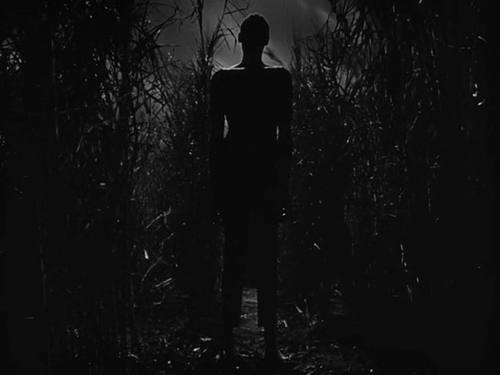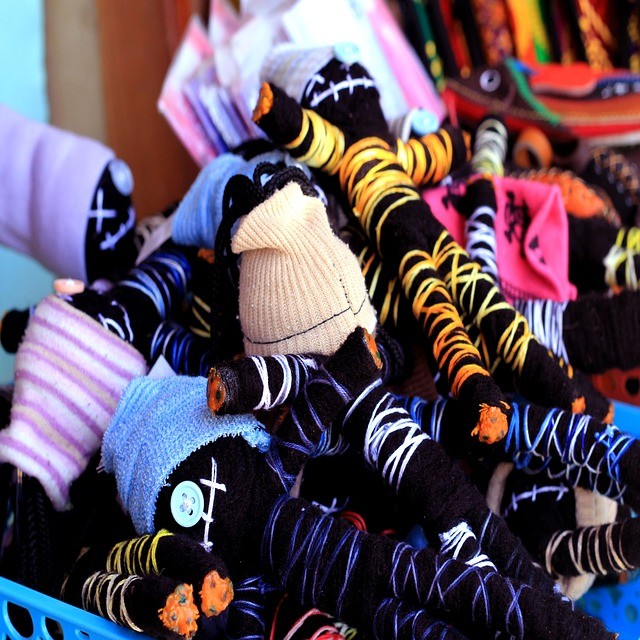The Voodoo Religion of New Orleans

The roots of voodoo run deep with the sordid history of slavery in America, originating from the traditional West African religion of vodoun (also vodun), it further evolved once it reached Haiti and Louisiana. Louisiana voodoo—properly known as vodoun—the queens and priestesses hold the highest position within this matriarchal religion. Something that may surprise those unfamiliar with vodoun, is that it’s actually a monotheistic religion which centers around the supreme creator, Bondye (French Creole for “good god”) who controls life and destiny. Bondye manifests his will through the many loa (also lwa) present within this belief system.
Loa: Spirits of Vodoun
The loa are spirits who connect the followers of vodoun to their deity—through the use of vèvè, symbols which serve as visual representation of the loa during ritual, practitioners are able to call upon the loa for their assistance in personal matters. Despite many people not having any formal knowledge of loa or their role in the religious practices of vodoun, they would easily recognize the visage of popular spirits such as Papa Ghede and Papa Legba, if not just as cultural references that they associate with New Orleans in general.
Misconceptions of Voodoo Dolls
Misrepresented time and time again, voodoo dolls have come to represent something far beyond the reach of what they were originally used for. Hollywood would have us convinced that they’re instruments of evil, used to control the actions of people, or otherwise wreak havoc, and destroy their lives. Except voodoo dolls are not traditionally used to cause people harm in any sense of the word. These dolls are indeed used as a physical representation of the person who is the focus of the ritual, but instead of harm, they are often used for among other things, love, success, and healing.
The Mystery of Zombification
A far cry from the stereotypical walking dead that has made the horror genre of international cinema so powerful, the origin of zombies is quite a bit more disturbing than we’re used to these days. When it comes to the origin of zombie lore, the fear isn’t derived from the idea of being the main course of a zombie feast—instead it’s the idea of being turned into a zombie. The short and sweet version? Zombies as derived from the Haitian vodun practice are actually living people, who have been chemically induced to have no free-will.
Hoodoo, Conjure, and Rootwork: African American Folk Magic
Many people believe that hoodoo and voodoo are interchangeable—it’s not a tough concept to explain that while they’re similar, they’re not the same, but it still seems to be an ongoing issue of mistaken identity. Voodoo, as has been explained now, is actually a religion that utilizes the folk magic practice, whereas hoodoo is actually just a folk magic practice with no hard and fast religious affiliation, although most practitioners identify as Protestant Christians. To be clear, hoodoo is but one of the most common types of African American Folk Magic, with other practices such as conjure and rootwork being nearly interchangeable with minimal differences, other than the region in which they are practiced.
Santería: The Worship of Saints
Another religion that is commonly mistaken for voodoo, is Santería—a religion that also has West African origins, but was further developed in Cuba among West African descendants. One of Louisiana’s best kept religious secrets, this Yoruba based religion merged with Roman Catholicism and embraced the Catholic saints, referred to often as orishas who act as emissaries to God—Olodumare.
The Honey Island Swamp Monster
A legend known in the Bayou is that of the Honey Island Swamp Monster—a bipedal cryptid that is likened to bigfoot, but described physically as being quite dissimilar other than its stature. This grey-haired, yellow (or red, depending on the source) eyed monster is said to be a creature that was born from chimpanzees that escaped from a circus train that wrecked on the tracks, and the local alligator population.

Georgia-based author and artist, Mary has been a horror aficionado since the mid-2000s. Originally a hobby artist and writer, she found her niche in the horror industry in late 2019 and hasn’t looked back since. Mary’s evolution into a horror expert allowed her to express herself truly for the first time in her life. Now, she prides herself on indulging in the stuff of nightmares.
Mary also moonlights as a content creator across multiple social media platforms—breaking down horror tropes on YouTube, as well as playing horror games and broadcasting live digital art sessions on Twitch.

